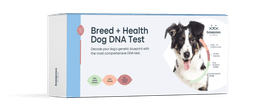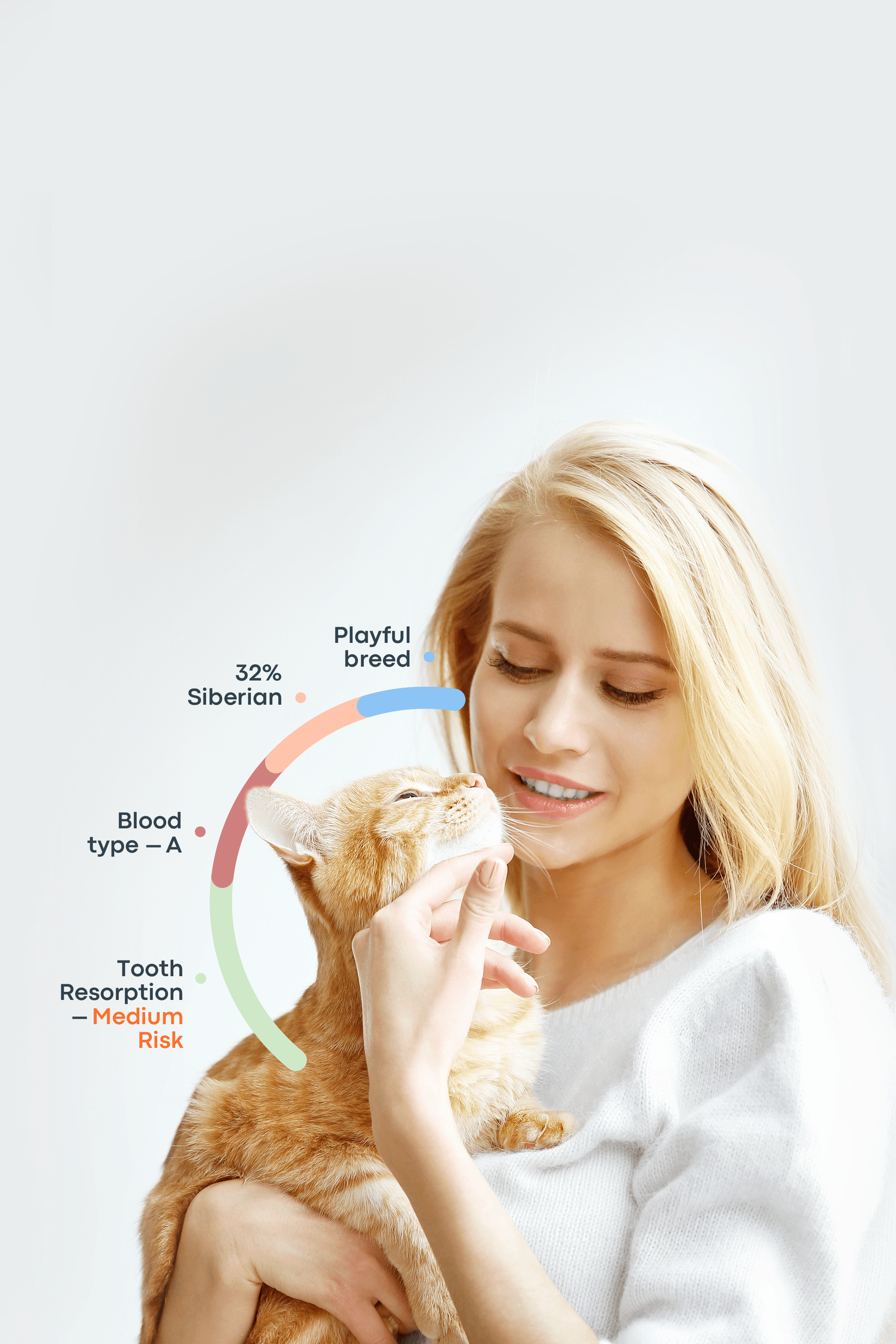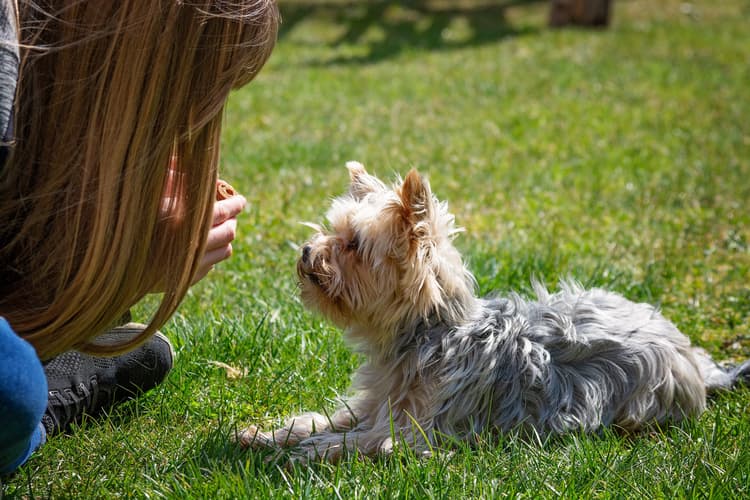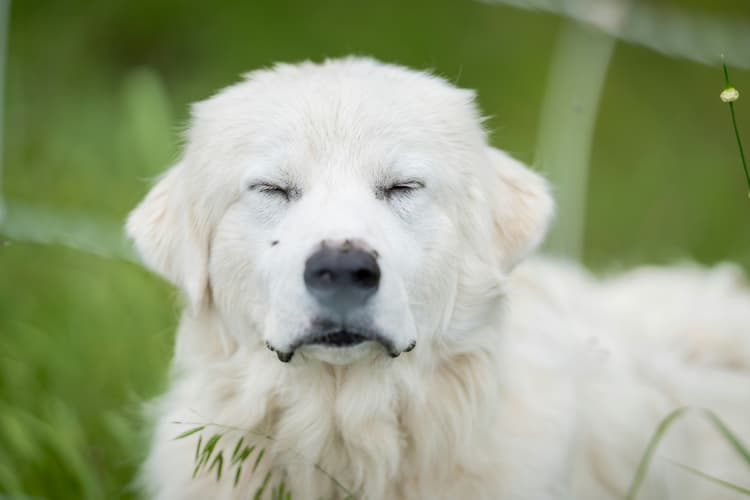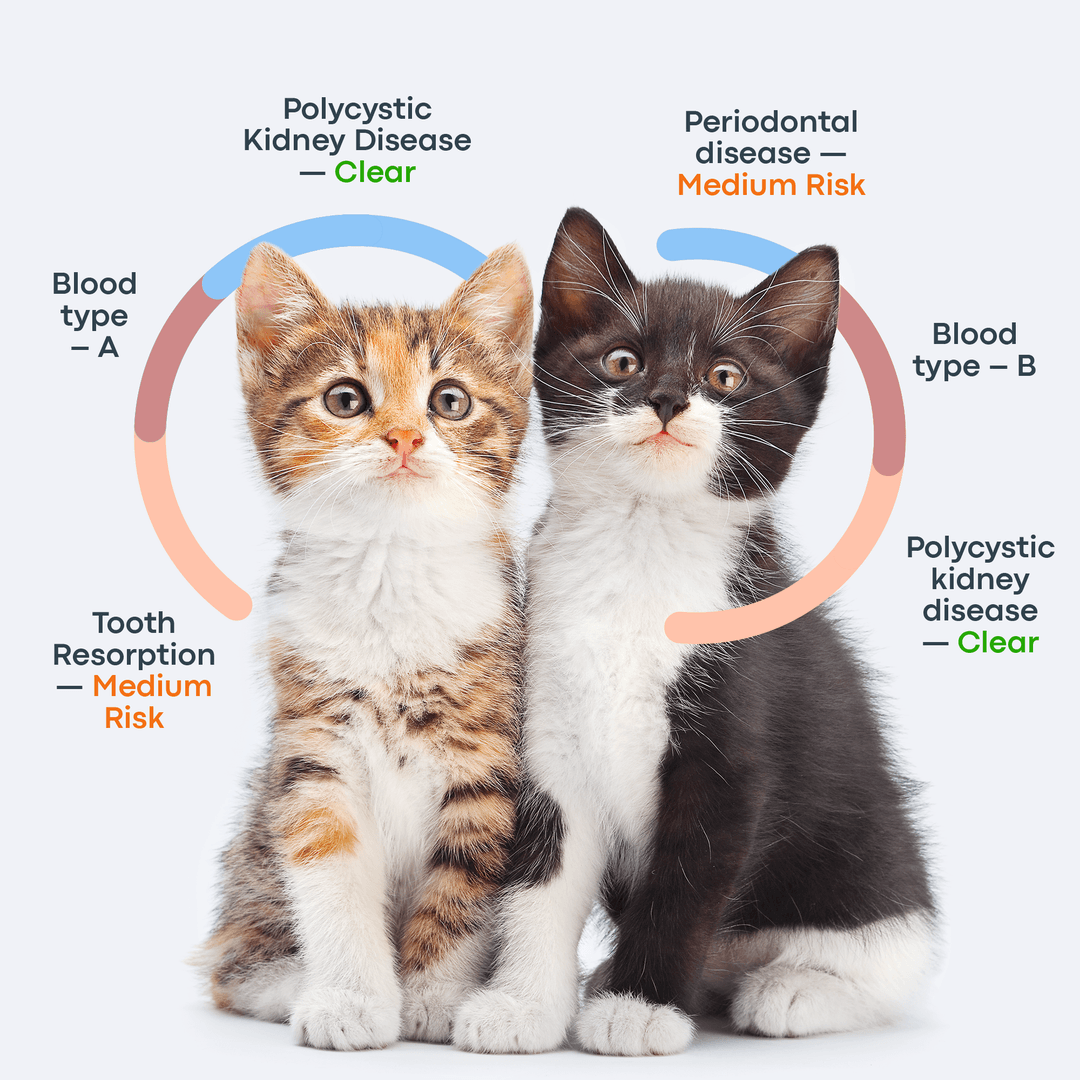Dog Body Language: The Foundation of Communication
You’ve probably heard that 90% of human communication is non-verbal. While this exact figure hasn’t been proven, it has been proven that without body language, human communication becomes increasingly difficult.
But “dog language” primarily consists of non-verbal cues that are used to talk to one another—and us! Since they can’t talk, their body becomes their mean method of communicating. Unfortunately, this also means that we have a tendency to misread their non-verbal cues or overlook them altogether.

Dog Posture Meaning
Understanding a dog’s posture is key to interpreting their emotions and intentions. While a single posture can tell you a lot, the real insight comes from observing it alongside tail position, ear placement, and facial expressions. The table below breaks down common postures, their meanings, and extra details to help you better read your dog’s signals.
Posture | Meaning & Extra Info |
Relaxed | Calm, content, and unthreatened; the dog feels safe. Often accompanied by a loose tail, soft eyes, and relaxed mouth. This is a good time to approach or interact gently. |
Forward-Leaning | Curious, assertive, or investigating; may indicate confidence or mild challenge. Check other cues: stiff ears or fixed gaze could mean the dog is preparing to confront, while wagging tail and relaxed body suggest curiosity and engagement. |
Crouching | Fearful, submissive, or anxious; trying to appear smaller. Often paired with tucked tail, lowered ears, and avoidance of direct eye contact. Avoid forcing interaction; give the dog space to feel safe. |
Belly-Up | Extreme appeasement or submission; the dog is showing vulnerability. While often interpreted as asking for a belly rub, it can be a stress signal, especially if paired with tense muscles or tucked tail. Approach slowly and respectfully. |
Raised Hackles | Highly stimulated or aroused; not always aggressive but signals heightened alertness. Combine with tail, ears, and facial cues to assess if the dog is excited, fearful, or defensive. |
Shifting Weight | Evaluating the environment or preparing for action; can indicate alertness or potential confrontation. Watch for accompanying body stiffness or paw movements for additional context. |
Lowered Body | Stress, submission, or fear; signaling that the dog poses no threat. Often combined with lip licking, yawning, or avoiding eye contact. Respond with calm reassurance and space if needed. |
Dog Language: Deciphering Tail Wagging
A dog wagging its tail is a happy dog—right? As it turns out, not always! A dog can wag its tail due to happiness but also due to a range of other emotions including fear. You can determine what a dog’s tail wagging means by being mindful of how high the tail is wagging, how fast its wagging, and in which direction it is wagging.
Tail Feature | Meaning & Extra Info |
Height | High: Confidence, alertness, or potential aggression. May indicate the dog is highly aware of its environment. Low: Submission, fear, or uncertainty. Often paired with a lowered body or tucked tail. |
Speed | Fast: High arousal, excitement, or agitation. Consider other cues to determine whether it’s positive (play) or negative (stress). Slow: Low arousal, contentment, or mild caution. |
Direction | Right-Sided Wag: Positive emotions such as happiness, friendliness, and relaxation. Left-Sided Wag: Negative emotions such as anxiety, stress, or caution. |
Breed Variations | Neutral tail positions differ by breed. For example, Pomeranians and Akitas have naturally curled tails, while Labradors and Golden Retrievers carry theirs lower. Always interpret tail movement relative to the dog’s typical posture. |
Facial Expressions and Eye Signals
A dog’s face and eyes convey a wide range of emotions. Paying attention to these cues, along with tail and body posture, can help you understand what your dog is feeling.
Signal | Interpretation & Extra Info |
Soft Eyes | Relaxed and happy; usually paired with a loose mouth and calm body. Indicates comfort and trust. |
Hard Eyes | Guarding, tense, or focused; may precede aggression. Often paired with a stiff body and raised hackles. |
Yawning | Stress-relieving or calming signal. Dogs may yawn to self-soothe or de-escalate a tense situation. |
Lip-Licking | Appeasement or anxiety signal. Often communicates “I mean no harm” or “please give me space.” |
Averted Gaze | Discomfort, avoidance, or submission. Dogs may look away to prevent conflict or show respect. |
Whale Eye | Whites of the eyes visible when the dog turns its head sideways while keeping gaze forward. Indicates stress, fear, or discomfort. |
Submissive Grin | Friendly signal, usually with a relaxed body; not a sign of aggression. |
Snarling | Aggressive warning; typically includes a stiff body, raised hackles, and bared teeth. Signals a desire for space or a potential threat. |
Yawning, lip-licking, and averting their gaze are all considered to be appeasement dog behavior. This means that they are intended to de-escalate tense situations and prevent confrontations. They are often used to communicate things like “I want space” and “I mean no harm”.
“Whale eye,” if you haven’t heard of it, is when the whites of your dog’s eyes appear as a half moon when your dog turns its head sideways while simultaneously keeping their gaze focused on something in front of them. This is one of the most common dog signs of stress, fear, and discomfort.
How Dogs Use Vocalizations
Dogs use vocalizations to communicate, but the meaning of these sounds is best understood alongside their non-verbal dog body language. Tail position, posture, facial expressions, and ear movements all provide context to interpret what your dog is trying to convey.
Vocalization | What It Means & Extra Info |
Barking | Can indicate excitement, alertness, or distress. The tone, pitch, and frequency matter: high-pitched barks often signal joy or playfulness, short sharp barks can be a warning or call for attention, and low, deep barks may indicate a threat or defensiveness. |
Growling | Usually a warning or sign of discomfort. Growls can be offensive (asserting dominance) or defensive (fear-based). Accompanied by stiff posture, raised hackles, or bared teeth, growling signals that the dog wants space or that a situation may escalate. |
Whining | Indicates stress, anxiety, or a desire for attention. Whining can also communicate fear, pain, or requests for something like food or toys. Context and body language are key to interpretation. |
Howling | Typically used to communicate over a distance. Dogs may howl to signal loneliness, locate other dogs, or join in group vocalizations. It can also be a response to certain sounds, like sirens or musical instruments. |
Much the same way that our pitch, tone, and frequency are used to communicate and add emphasis to our words, thoughts, and feelings, these factors also play into the vocal communication of dogs.
For example, high-pitched barking often means excitement, while a short, sharp bark is often an urgent warning to another dog to stay away or a predator to back up. A deep, low-in-the-throat bark paired with crouching or cowering can serve as a show of fear or defensiveness.
Whining, according to the American Kennel Club, can mean everything from fear and pain, to desire for tasty food or the toy that you’re holding in your hand. The meaning depends on the context—the rest of what your dog’s posture and body language is saying.
What Does It Mean When A Dog…
Yawns or Licks Its Lips
Yawning and lip-licking can signal two very different emotions: stress or calmness. Stressful situations that may trigger these dog behaviors include vet visits, meeting unfamiliar guests, or exposure to loud noises. Lip-licking can also indicate hunger, especially if it occurs near mealtime or when your dog smells food being prepared. Observing the context and your dog’s overall body language is key to interpreting these signals correctly.
Smiles or Shows Teeth
When a dog shows their teeth, it’s usually in one of two ways—submissively or aggressively. The “submissive grin” can be seen when a dog is trying to de-escalate situations they perceive as tense. This grin usually accompanies an averted gaze and a generally relaxed body posture.
When a dog feels defensive and the grin is aggressive, it often comes with a tense body posture, low wagging tail, growling, and direct eye contact.
In some cases, though, dogs may show their teeth when they are related or happy. It’s in these situations that it truly looks like the dog is smiling.
Stands on Their Hind Legs
Dogs may stand on their hind legs for a variety of reasons, most commonly to play or seek human attention. They might do this to request a treat, ask to go outside, or invite a belly rub. Contrary to popular belief, standing on hind legs is not usually a sign of dominance. It’s simply a way for dogs to reach, explore, or communicate their needs.
Can Dogs Communicate With Each Other?
Dogs communicate with each other using a multi-sensory system that combines body language, vocalizations, and scent. Because of their keen perception and instincts, communication between dogs is often faster and more precise than what humans can easily interpret. This is why it can seem like dogs have full-blown “conversations” right in front of us.
How Do Dogs Communicate With Each Other?
Dogs use a variety of signals to initiate play, assert boundaries, or manage tension. Observing these cues in multi-dog households or at dog parks can help owners understand their pets’ social interactions:
Play Bow: Front legs stretched forward, rear end up. This universal signal invites play and indicates friendly intentions. Dogs often combine this with wagging tails and bouncy movements.
Paw Slap: A dog may gently tap another dog with its paw during play to initiate interaction or redirect attention. This is often playful, but context matters.
Raised Hackles: Hair along the back stands up when a dog is highly aroused. This can signal excitement or potential tension. Other cues (tail position, posture) help determine whether the situation is playful or aggressive.
Direct Stare vs. Looking Away: A direct stare can be a challenge or assertion of dominance, whereas looking away is a calming or appeasement signal to prevent conflict. Dogs use these cues to escalate or de-escalate interactions depending on the situation.
Examples in Real Life
At dog parks, you’ll often see dogs using a combination of these signals. A dog may approach another with a play bow, wagging tail, and relaxed ears, which invites play. If one dog becomes overstimulated, raised hackles or a brief direct stare may signal the need for space, leading the other dog to back off. In multi-dog households, subtle signals like paw slaps, belly rolls, or brief averting of the gaze help maintain harmony and prevent fights.
By observing these signals, owners can better understand dog-dog social dynamics, anticipate conflicts, and support positive interactions between pets.
Final Thoughts: Deepening Your Bond Through Understanding
Canine body language is complex, but improving your understanding of it can greatly strengthen your relationship with your dog. By paying attention to their signals, you can build trust, increase bonding, and foster a stronger, more rewarding connection.
Remember to consider all aspects of your dog’s behavior when interpreting their communication—body posture, tail movement, facial expressions, and vocalizations all work together to convey meaning. Paying close attention to vocal cues, in particular, can reveal emotions that aren’t immediately obvious from posture alone.
Frequently Asked Questions
Do dogs have their own language?
Yes. Dogs have a unique system of communication that combines body language, facial expressions, tail movements, and vocalizations. This is often referred to as “dog language.”
Can we learn the dog's language?
While we can’t speak to dogs exactly as they speak to each other, we can learn to interpret their body language and vocalizations. Understanding these signals helps us respond appropriately to their needs.
Is puppy body language different?
Not significantly. Puppies and adult dogs use the same forms of communication, though puppies may exaggerate behaviors or experiment with signals as they learn.
How can I teach my dog to speak in human language?
Dogs cannot speak any human language, but they can learn to understand words and commands through techniques like positive reinforcement. This allows effective communication from human to dog.
Can dogs recognize different spoken languages?
Yes. Dogs can distinguish languages based on sound patterns and intonation, even if they don’t understand the meaning of the words.
Which human language do dogs understand easily?
No. Dogs don’t inherently understand one language better than another. They respond to familiar sounds, tone, and repetition rather than the specific language.
How to tell a dog you love them in dog language?
Actions speak louder than words. Lean into your dog gently, maintain soft, non-threatening eye contact, and use gentle physical touch. These cues communicate affection and reassurance in a way they understand.
Is vocal communication dog body language?
Not exactly. Vocalizations—like barking, whining, or howling—are a form of communication, but body language refers to all non-vocal signals, including posture, tail, ears, and facial expressions. Both work together to convey your dog’s emotions.

